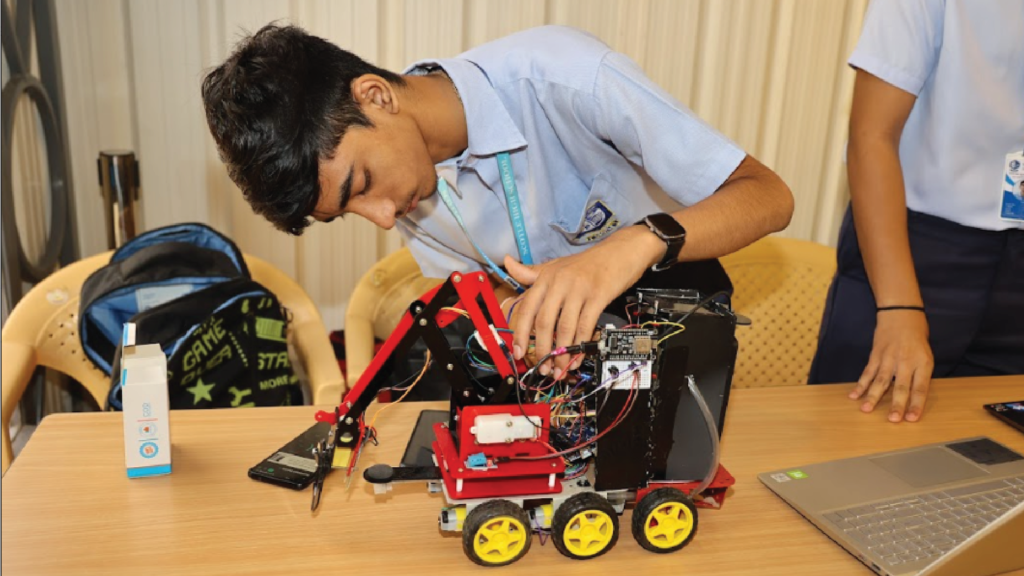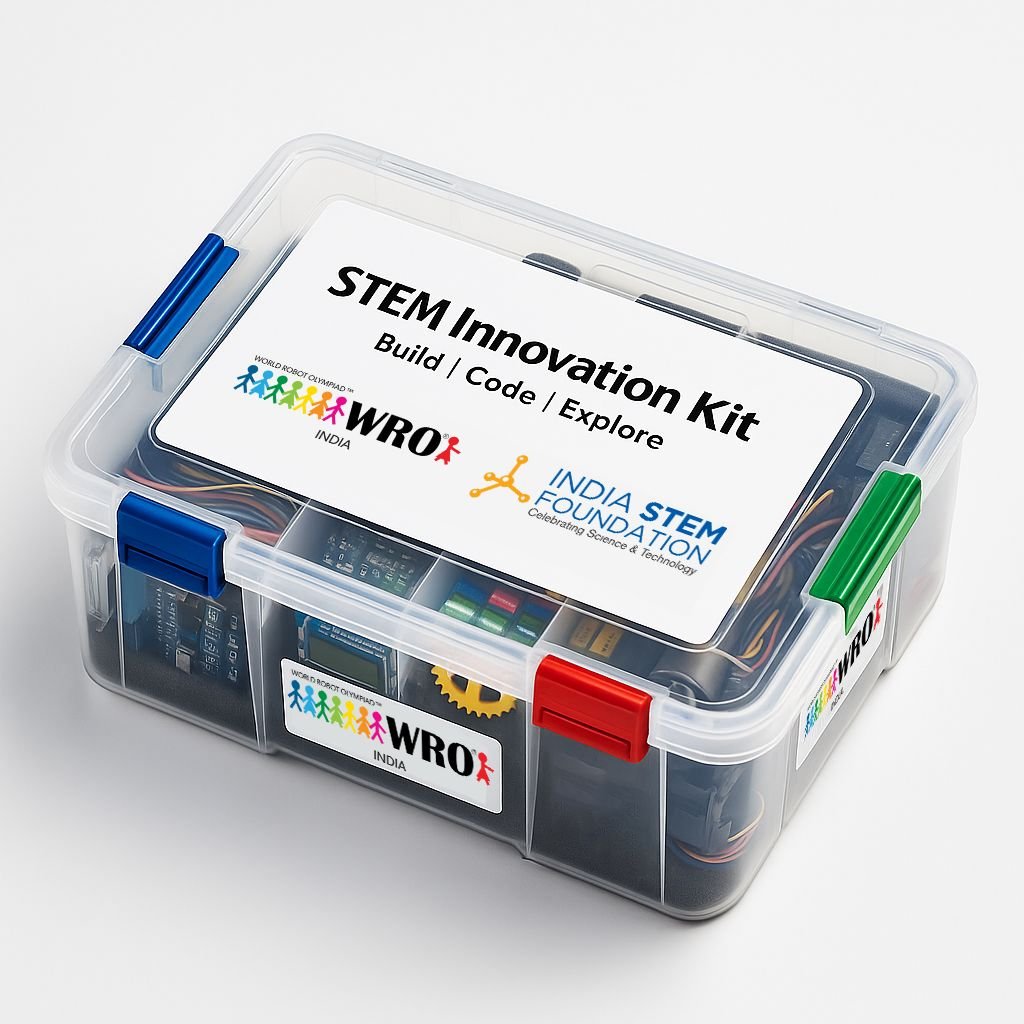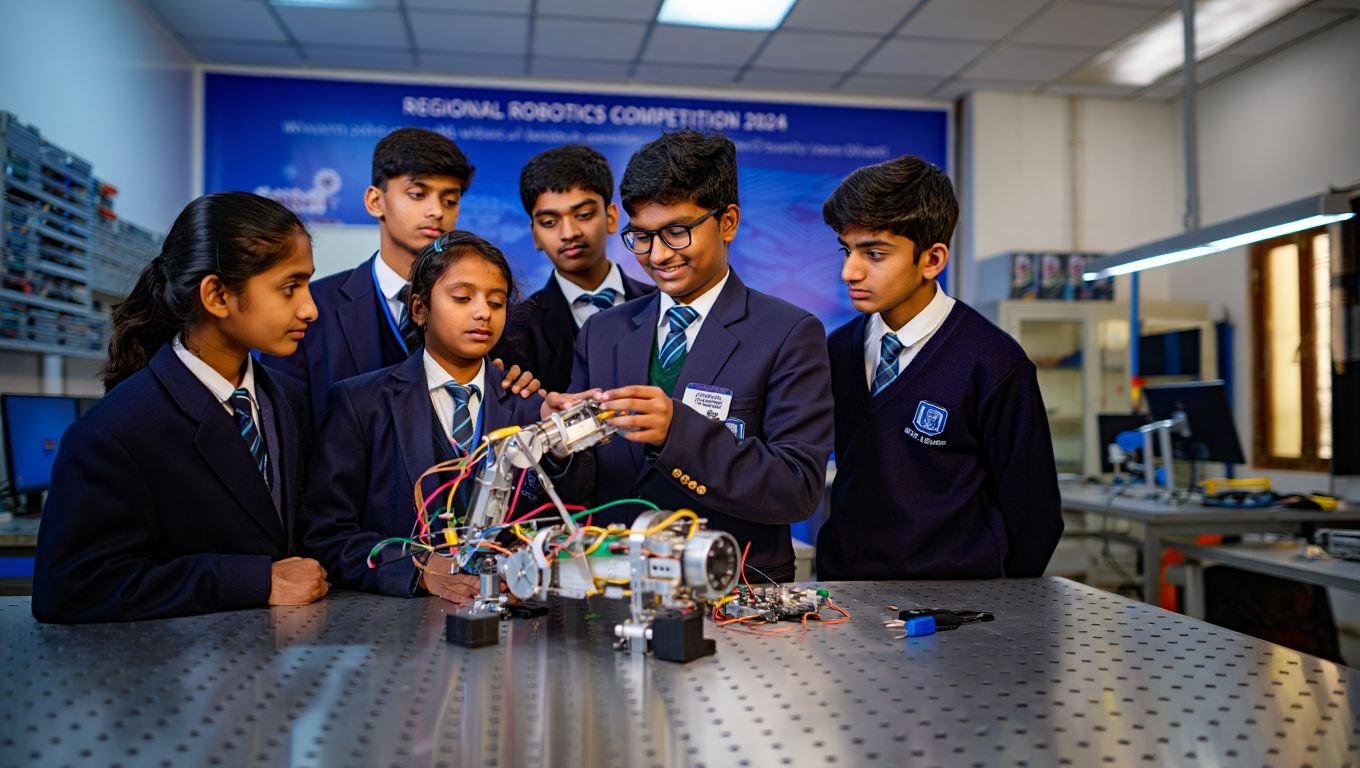In a time where robotics is reshaping the future, STEM education has become the key to a society that is developing quickly. STEM, or science, technology, engineering, and mathematics, is an interdisciplinary approach that fosters innovation and creativity while giving students the tools they need to address difficult social issues. Students who get STEM education gain analytical thinking and critical problem-solving abilities that, even in the face of current obstacles like gender inequality and resource scarcity, greatly improve their chances of finding employment. Through a range of programs, seminars, and events, the India STEM Foundation is dedicated to shaping India’s future by supporting STEM education and encouraging young minds to become the innovators and problem-solvers of tomorrow.
In today’s technologically advanced, fast-paced culture, solving present problems frequently leads to innovative solutions. Businesses are looking for people with a natural curiosity, a strong drive to solve issues, and the flexibility to quickly adjust to the rapidly evolving technology world. It is essential to comprehend and welcome robotics programs as we head towards a world in which technology pervades every part of life, from enhancing accessibility to developing customized care systems and smart house design. It is becoming more and more crucial to strike a balance between human interaction and autonomy using technologies like artificial intelligence (AI), which can recognize and react to personal preferences. This essay examines the potential for robotics education in Indian classrooms and how it might help students get ready for the challenges of a changing global environment.
The Present Situation of Indian Robotics Education
The current state of robotics education in India is progressively changing as the value of this subject in educating students for upcoming technological innovations grows. Although some metropolitan schools—particularly private ones—have begun integrating robots into their curricula, the field is still rather small, especially when it comes to impoverished and rural regions. Schools around the nation are able to access workshops, training, and resources with the efforts of organizations like the India STEM Foundation and initiatives like Robo Siksha Kendra, which are advancing robotics education.
There are still issues, though, such as a dearth of qualified teachers, poor facilities, and restricted access to robotics kits. Notwithstanding these obstacles, there appears to be a good change in the kids’ and teachers’ developing enthusiasm. Given the growing backing from both the public and private sectors, robotics education in India appears to be poised for substantial growth and may eventually become a standard feature of the country’s educational system.
Growing Interest: Institutions and educators are becoming more conscious of the role that robotics plays in fostering the development of critical thinking, problem-solving, and collaborative abilities. This is especially true in cities where more educational institutions are incorporating robots into their curricula.
Curriculum Integration: In certain schools, robotics is being taught in the context of science, technology, and computer studies. It is frequently taught alongside topics like coding and artificial intelligence. Students are better able to comprehend how robotics fits into the larger framework of contemporary technology and its applications, thanks to this multidisciplinary approach.
Urban-Rural Disparity: When it comes to access to robotics education, there is a sizable difference between urban and rural locations. Many schools in rural and economically poor areas lack the basic resources—such as financing, infrastructure, and qualified teachers—while metropolitan and private schools are more likely to have them. This difference prevents a larger student body from benefiting from robotics instruction.
Private Sector Involvement: The advancement of robotics education is greatly aided by a number of private organisations, businesses, and educational platforms. To provide kids more chances to study robotics, they provide online classes, weekend workshops, and after-school activities. These programs are especially helpful in places where robotics is not taught in the regular curriculum of schools.
India STEM Foundation’s Robotics and AI Initiatives
The India STEM Foundation strives to raise the standard of STEM education across the nation. The Foundation was established with the intention of motivating and enabling the next wave of creative thinkers and problem solvers. It offers a range of initiatives to help students advance their STEM literacy and competence.
The India STEM Foundation is committed to employing state-of-the-art technology to speed up processes, reduce labor costs, and increase production. The Foundation integrates robotics and artificial intelligence (AI) into its educational programs to prepare students for a world when these technologies will be commonplace.
The Foundation gives students the tools they need to become the innovators and problem solvers of the twenty-first century through initiatives like Gyanodya and Anusikshan, among others.
The Gyanodya initiative is centred on giving children from underprivileged communities extra STEM instruction. Students are introduced to STEM ideas in an enjoyable and engaging way through interactive seminars, practical exercises, and mentorship sessions.
The Anusikshan program offers advanced STEM courses and enrichment activities to students in secondary and upper secondary education. These courses stress practical application, problem-solving techniques, and critical thinking skills in addition to standard classroom instruction.
Sanrachna, the organization, offers the necessary infrastructure—smart classrooms, libraries, solar power, and more—to transform educational establishments through the Sanrachna project.
Robo Siksha Kendra: The Robo Siksha Kendra initiative aims to develop students’ interest in and proficiency in robotics by offering comprehensive training modules, state-of-the-art robotics facilities, and advanced robotics kits. Through hands-on learning experiences, students are exposed to a range of robotics concepts, including programming, circuit design, and mechanical engineering. One of the primary objectives of the Robo Siksha Kendra program is to enhance students’ critical thinking, problem-solving, and collaboration skills. Students who take part in robotics contests and projects improve their collaboration, analytical thinking, and application of STEM concepts to real-world scenarios.
Moreover, the curriculum aligns with the broader goals of the India STEM Foundation, which include fostering students’ technological literacy, inventiveness, and creativity.
The Robo Siksha Kendra program aims to reach students from a range of Indian communities and backgrounds by emphasizing accessibility and diversity. The India STEM Foundation collaborates with educational institutions, governmental organizations, and corporate sponsors to ensure that all students, regardless of financial status or geography, have access to robotics instruction.
In summary, robotics education in India is at a turning point as more people see how important it is to prepare kids for a quickly changing technology environment. At the same time, great achievements have been made, especially in urban and private schools, but issues like resource restrictions and uneven access persist. Initiatives such as the ones started by the India STEM Foundation play a critical role in closing these gaps and guaranteeing that kids across the world may participate in robotics education. Growing and improving robotics education will be essential to preparing the next generation for a world where technology permeates every part of life and allows for innovation, problem-solving, and survival in a complicated environment.




